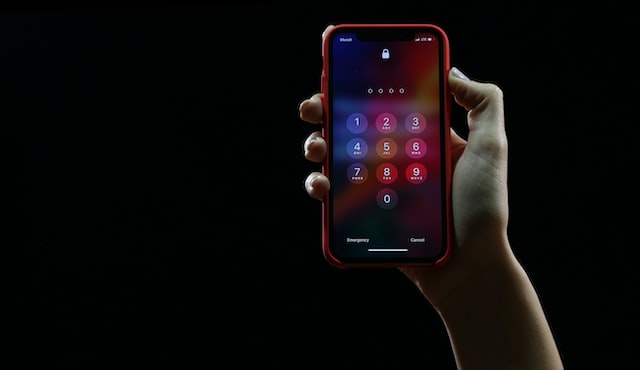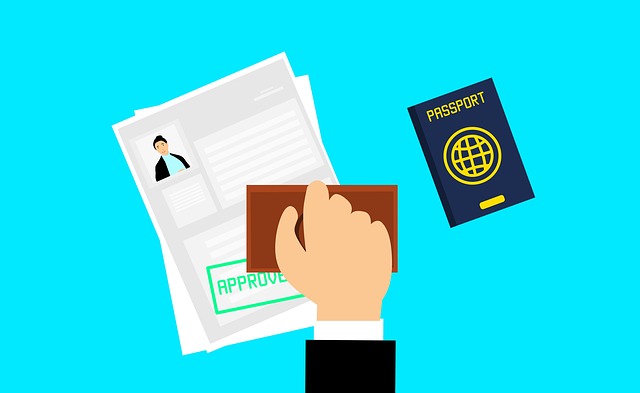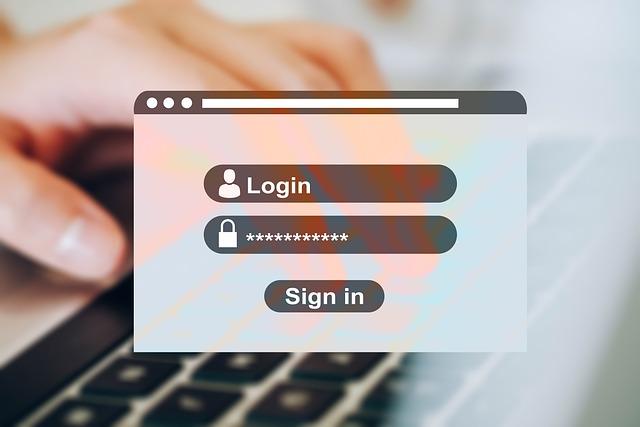Authentication is the process of verifying the identity of a user or system, while authorization is the process of granting or denying access to specific resources or actions based on the authenticated user’s permissions. In other words, authentication confirms who you are, while authorization determines what you can access.
What is Authentication?
(Photo by Yura Fresh on Unsplash )

Authentication is the process of verifying that someone is who they say they are. This can be done in a number of ways, but most commonly involves requiring a user to log in with a username and password. Once a user is logged in, they can be given access to certain resources or functionality within an application.
What is Authorization?
(Image by mohamed_hassan from Pixabay )

Authorization is the process of granting or denying access to specific resources or actions based on a user’s identity and permissions. In other words, once a user has been authenticated and their identity has been verified, authorization determines what that user is allowed to do within a system or application. This can involve setting up different levels of access and privileges for different types of users, or controlling access to specific files, databases, or other resources based on predefined rules and policies. The goal of authorization is to ensure that only authorized users are able to access or modify sensitive information, and to prevent unauthorized access or misuse of resources.
Authentication vs. Authorization – Key differences
Authentication and authorization are both important concepts in information security, but they have different meanings and serve different purposes. Here are some key differences between the two:
Definition: Authentication is the process of verifying the identity of a user or system, while authorization is the process of granting or denying access to specific resources or actions based on the authenticated user’s permissions.
Purpose: Authentication is used to establish trust and confirm that the person or system trying to access a resource is who they claim to be, while authorization is used to control access and ensure that only authorized users are able to perform certain actions or access specific resources.
Timing: Authentication usually comes before authorization, since the user’s identity needs to be confirmed before access can be granted or denied. However, in some cases, authentication and authorization may be performed simultaneously or in a different order.
Scope: Authentication is typically focused on verifying the identity of a single user or system, while authorization is concerned with managing access and permissions for multiple users and resources.
Granularity: Authentication usually involves a binary yes/no decision (i.e., the user is either authenticated or not), while authorization can involve more nuanced decisions about what specific actions or resources a user is allowed to access or modify.
Authentication and authorization are both critical components of information security, and they work together to ensure that only authorized users are able to access sensitive resources and perform important actions within a system or application.
Examples of Authentication Methods
There are many different methods and technologies that can be used for authentication, depending on the level of security required and the specific needs of a system or application. Here are some common examples of authentication methods:
Passwords: Passwords are a widely-used authentication method that require users to enter a unique username and password combination to access a system or application. This method is relatively simple to implement but can be vulnerable to attacks such as brute force attacks or password cracking.
Two-factor authentication (2FA): 2FA is a more secure authentication method that requires users to provide two forms of identification, such as a password and a one-time code sent to their phone or email. This method adds an extra layer of security to protect against unauthorized access.
Biometric authentication: Biometric authentication uses physical characteristics such as fingerprints, facial recognition, or iris scans to identify users. This method is very secure but can be more expensive and complex to implement.
Smart cards: Smart cards are small, portable devices that store encrypted authentication information and require a user to enter a PIN or provide a fingerprint to access a system or application. This method is very secure but can be expensive and inconvenient to use.
Digital certificates: Digital certificates use a system of public and private keys to authenticate users and encrypt data transmissions. This method is widely used in secure websites and email systems and provides a high level of security for sensitive data.
The choice of authentication method will depend on the level of security required, the specific needs of the system or application, and the resources available to implement and maintain the authentication system.
Examples of Authorization Methods
There are several methods and technologies that can be used for authorization, depending on the specific needs and security requirements of a system or application. Here are some common examples of authorization methods:
Role-based access control (RBAC): RBAC is a widely-used authorization method that assigns different levels of access and permissions to different roles within a system or application. Users are assigned to specific roles based on their job responsibilities, and the system or application enforces access control based on those roles.
Attribute-based access control (ABAC): ABAC is a more flexible authorization method that takes into account a wide range of user attributes, such as job title, location, and other factors. Access control decisions are based on a set of rules that take into account these attributes.
Rule-based access control (RBAC): RBAC is a simple form of authorization that uses a set of predefined rules to determine whether a user is authorized to perform a specific action or access a specific resource.
Mandatory access control (MAC): MAC is a highly secure authorization method that uses a set of predefined security policies to determine which users are authorized to access specific resources. This method is commonly used in military and government applications.
Discretionary access control (DAC): DAC is a more flexible authorization method that allows users to control access to their own resources. Users are given ownership of specific resources and can set access control permissions as they see fit.
The choice of authorization method will depend on the specific needs and security requirements of the system or application in question. Some systems may require highly secure methods such as MAC, while others may be able to use more flexible methods such as RBAC or DAC.
When to Use Authentication?
There are a few key scenarios where authentication is necessary:
1. When you need to verify the identity of a user before allowing them access to sensitive information or functionality. For example, when logging into a bank account, you need to be sure that the person entering the username and password is actually the account holder.
2. When you need to track which actions were taken by which users. This is often the case in business applications, where it’s important to know who did what and when. By authenticating users, you can ensure that each action is tied to a specific individual.
3. When you need to enforce security policies based on users’ identities. For instance, you might want to allow only certain users to access certain parts of your system or data. Or you might want to require two-factor authentication for particularly sensitive information. By authenticating users, you can control who has access to what.
When to Use Authorization?
There are a few key instances when authorization is necessary:
1. When accessing sensitive data: This could be personal information like social security numbers or health records, financial data like credit card numbers or bank account details, or classified information like state secrets. 2. When making changes to critical systems: This could include adding or deleting users, changing system configuration settings, or running administrative tasks. 3. When performing high-risk actions: This might involve activities like transferring money, changing passwords, or resetting security codes.
In each of these cases, it’s important to have a mechanism in place to ensure that only authorized users can access the data or perform the actions in question. That’s where authorization comes in. By requiring users to provide additional credentials (like a one-time code) before they can proceed, you can be sure that only those with the proper permissions can access the sensitive data or make changes to critical systems.
What is authorization and authentication in API?
API authentication is the process of verifying that a user or entity requesting access to a resource is who they say they are. API authorization is the process of verifying that the user or entity has the permissions necessary to access the requested resource.
In order to protect data and resources, most APIs use some form of authentication and authorization. Authentication verifies the identity of the user or entity requesting access, while authorization verifies that the user or entity has the necessary permissions to access the requested resource.
There are various methods of authenticating and authorizing users and entities for API access, but one common method is to use an API key. An API key is a unique string of characters that is assigned to a specific user or entity. When a user or entity makes a request to an API, they include their API key in the request. The API then checks the request against its database of authorized keys and either grants or denies access to the resource.
What are three types of authentication?
There are three primary types of authentication: something you know, something you have, and something you are.
Something you know is the most common form of authentication. It includes items such as passwords, personal identification numbers (PINs), and answers to secret questions. As long as these items are kept confidential, they can be very effective. However, if they fall into the wrong hands, they can be used to gain access to systems and data.
Something you have is the second type of authentication. This could be a physical item such as a keycard or token, or a digital item such as a one-time password (OTP) generated by an app on your phone. The advantage of this type of authentication is that even if someone knows your password, they would also need to have possession of your physical token in order to login.
The third type of authentication is something you are, which refers to biometrics like fingerprints, iris scans, and voice recognition. This is generally considered the most secure form of authentication because it’s the hardest to spoof. That said, biometric data can be stolen (just like any other type of data) and once it’s out there, it can’t be changed like a password can.
What are the 5 factor authentication?
There are generally five considered factors of authentication: something you know (like a password), something you have (like a key or an ID card), something you are (biometrics like fingerprints or iris scans), where you are (a location) and what you’re doing (an action, like using a token). Two-factor authentication is using two of these factors to verify your identity. Multi-factor authentication is using three or more.
Featured Image By – Gerd Altmann from Pixabay








